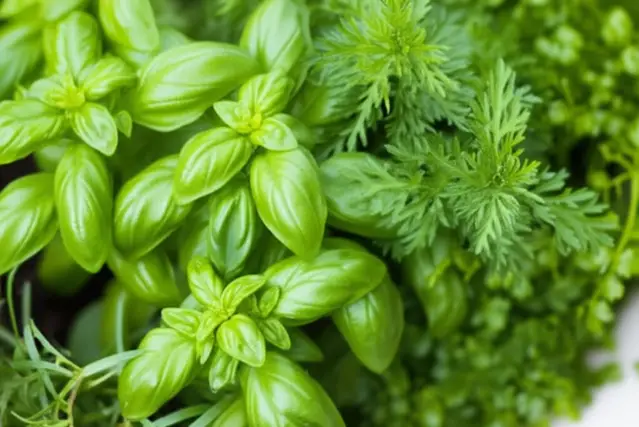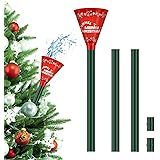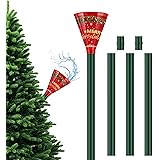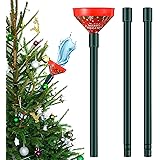Dreaming of a lush herb garden on your patio, but live in a windy area? Don’t let the breeze discourage you! Many herbs are surprisingly resilient and can thrive even in exposed locations.
This guide will explore the best herbs for windy patios, offering tips and tricks to create a beautiful and functional space where your herbs can flourish.
Why Choose Herbs for a Windy Patio?
Herbs are an excellent choice for windy patios for several reasons:
- Resilience: Many herbs have evolved to withstand harsh conditions, including strong winds and drought.
- Versatility: Herbs can be used for cooking, medicinal purposes, and even as ornamental plants.
- Low Maintenance: Once established, most herbs require minimal care.
- Fragrance: Many herbs offer a delightful fragrance that can enhance your patio experience.
Understanding Wind and Its Impact on Plants
Before diving into the best herbs, it’s essential to understand how wind affects plants:
- Desiccation: Wind can quickly dry out plants, leading to dehydration and stress.
- Physical Damage: Strong winds can break stems, tear leaves, and even uproot plants.
- Soil Erosion: Wind can erode the topsoil, exposing roots and depriving plants of nutrients.
- Temperature Fluctuations: Wind can exacerbate temperature extremes, making it harder for plants to regulate their internal temperature.
Factors to Consider When Choosing Herbs for a Windy Patio
When selecting herbs for your windy patio, keep these factors in mind:
- Hardiness: Choose herbs that are known for their ability to withstand wind and drought.
- Growth Habit: Compact, low-growing herbs are generally more resistant to wind damage than tall, spindly ones.
- Container Size: Larger, heavier containers are less likely to be blown over by the wind.
- Soil Type: Well-draining soil is crucial to prevent root rot, especially in windy conditions. You may find some helpful advice in this article about the best soil for propagating snake plants.
- Sunlight Requirements: Ensure that your chosen herbs receive the appropriate amount of sunlight for their needs.
The Best Herbs for Windy Patios: A Detailed Guide
Here’s a comprehensive list of herbs that thrive in windy conditions, along with their characteristics and care tips:

1. Thyme (Thymus)
Thyme is a classic herb known for its resilience and aromatic leaves. It comes in various varieties, including creeping thyme, which is excellent for ground cover.
- Hardiness: Zones 5-9
- Growth Habit: Low-growing, spreading
- Sunlight: Full sun
- Watering: Drought-tolerant; water sparingly
- Wind Resistance: Excellent
- Uses: Culinary, medicinal, ornamental
Care Tips: Thyme prefers well-draining soil and plenty of sunlight. Prune regularly to encourage bushier growth. Avoid overwatering, as it can lead to root rot. The fragrant foliage of thyme also makes it a deer-resistant option, so you don’t need to worry about your herb garden becoming a snack for local wildlife.
2. Rosemary (Salvia rosmarinus)
Rosemary is a fragrant evergreen shrub with needle-like leaves. It’s a popular culinary herb and also adds beauty to the garden.
- Hardiness: Zones 7-10 (can be grown as an annual in colder climates)
- Growth Habit: Upright or spreading
- Sunlight: Full sun
- Watering: Drought-tolerant; water deeply but infrequently
- Wind Resistance: Excellent
- Uses: Culinary, ornamental, fragrance
Care Tips: Rosemary needs well-draining soil and plenty of sunlight. Prune regularly to maintain its shape and encourage new growth. Protect from frost in colder climates. Remember why you should keep rosemary by your garden gate it is great for cooking!
3. Lavender (Lavandula)
Lavender is a beloved herb known for its fragrant flowers and calming properties. It’s also surprisingly tolerant of windy conditions.
- Hardiness: Zones 5-9 (depending on the variety)
- Growth Habit: Bushy, upright
- Sunlight: Full sun
- Watering: Drought-tolerant; water sparingly
- Wind Resistance: Good
- Uses: Fragrance, culinary, medicinal, ornamental
Care Tips: Lavender requires well-draining soil and full sun. Prune after flowering to maintain its shape and encourage new blooms. Avoid overwatering, as it can lead to root rot. If you find your lavender is suffering from overwatering, this article on how to save overwatered lavender could be helpful.
4. Sage (Salvia officinalis)
Sage is a versatile herb with a slightly peppery flavor. It’s available in various varieties, including culinary sage, ornamental sage, and purple sage.
- Hardiness: Zones 4-8
- Growth Habit: Bushy, upright
- Sunlight: Full sun
- Watering: Drought-tolerant; water moderately
- Wind Resistance: Good
- Uses: Culinary, medicinal, ornamental
Care Tips: Sage prefers well-draining soil and full sun. Prune regularly to maintain its shape and encourage new growth. Avoid overwatering, especially in winter.
5. Oregano (Origanum vulgare)
Oregano is a staple in Italian and Mediterranean cuisine. It’s easy to grow and thrives in sunny, well-drained conditions.
- Hardiness: Zones 5-9
- Growth Habit: Spreading, low-growing
- Sunlight: Full sun
- Watering: Drought-tolerant; water moderately
- Wind Resistance: Good
- Uses: Culinary, medicinal
Care Tips: Oregano is relatively low-maintenance. Prune regularly to prevent it from becoming leggy. It can be invasive, so consider growing it in a container.
6. Mint (Mentha)
Mint is a refreshing herb with a wide range of uses, from flavoring beverages to adding a zing to culinary dishes. Be aware that mint spreads very easily. It’s one of the most invasive herbs, so containing it is essential.
- Hardiness: Zones 3-8
- Growth Habit: Spreading, invasive
- Sunlight: Part shade to full sun
- Watering: Water regularly; prefers moist soil
- Wind Resistance: Moderate
- Uses: Culinary, medicinal, fragrance
Care Tips: Mint is best grown in containers to prevent it from spreading aggressively. Provide regular watering, especially in hot weather. Cut back regularly to encourage bushier growth. If your mint plant is wilting, check for signs of pests or diseases.
7. Chives (Allium schoenoprasum)
Chives are a versatile herb with a mild onion flavor. They are easy to grow and add a pop of green to any garden.
- Hardiness: Zones 3-10
- Growth Habit: Clumping, upright
- Sunlight: Full sun to part shade
- Watering: Water regularly; prefers moist soil
- Wind Resistance: Moderate
- Uses: Culinary, ornamental
Care Tips: Chives prefer moist, well-drained soil. Cut back regularly to encourage new growth and prevent them from flowering. Divide clumps every few years to maintain their vigor.
8. Parsley (Petroselinum crispum)
Parsley is a popular garnish and culinary herb. It’s available in two main types: curly parsley and flat-leaf parsley.
- Hardiness: Zones 3-11 (usually grown as an annual or biennial)
- Growth Habit: Clumping, upright
- Sunlight: Full sun to part shade
- Watering: Water regularly; prefers moist soil
- Wind Resistance: Moderate
- Uses: Culinary, ornamental
Care Tips: Parsley prefers moist, well-drained soil. Provide regular watering and fertilize occasionally. Harvest regularly to encourage new growth. It can sometimes be challenging to grow your own red gold mine saffron, but Parsley is always dependable!
9. Lemon Balm (Melissa officinalis)
Lemon balm is a fragrant herb with a lemony scent. It’s known for its calming properties and is often used in teas.
- Hardiness: Zones 4-9
- Growth Habit: Spreading, bushy
- Sunlight: Full sun to part shade
- Watering: Water regularly; prefers moist soil
- Wind Resistance: Moderate
- Uses: Culinary, medicinal, fragrance
Care Tips: Lemon balm can be invasive, so it’s best grown in containers. Prune regularly to prevent it from spreading. Provide regular watering, especially in hot weather. Consider whether you can you plant lemon balm and cilantro together when planning your patio garden.
10. Bay Laurel (Laurus nobilis)
Bay laurel is an evergreen tree or shrub with aromatic leaves used to flavor soups, stews, and sauces.
- Hardiness: Zones 8-10 (can be grown in containers in colder climates)
- Growth Habit: Upright, tree-like
- Sunlight: Full sun to part shade
- Watering: Water regularly; prefers moist soil
- Wind Resistance: Moderate (benefits from protection from strong winds)
- Uses: Culinary, ornamental
Care Tips: Bay laurel needs well-draining soil and regular watering. Prune regularly to maintain its shape and size. Protect from frost in colder climates. While relatively wind-tolerant, provide some shelter from the strongest gusts.
Table of Best Herbs for Windy Patios
| Herb | Hardiness Zones | Sunlight | Watering | Wind Resistance | Uses |
|---|---|---|---|---|---|
| Thyme (Thymus) | 5-9 | Full Sun | Drought-tolerant | Excellent | Culinary, medicinal, ornamental |
| Rosemary (Salvia rosmarinus) | 7-10 | Full Sun | Drought-tolerant | Excellent | Culinary, ornamental, fragrance |
| Lavender (Lavandula) | 5-9 | Full Sun | Drought-tolerant | Good | Fragrance, culinary, medicinal, ornamental |
| Sage (Salvia officinalis) | 4-8 | Full Sun | Drought-tolerant | Good | Culinary, medicinal, ornamental |
| Oregano (Origanum vulgare) | 5-9 | Full Sun | Drought-tolerant | Good | Culinary, medicinal |
| Mint (Mentha) | 3-8 | Part Shade to Full Sun | Regularly; prefers moist soil | Moderate | Culinary, medicinal, fragrance |
| Chives (Allium schoenoprasum) | 3-10 | Full Sun to Part Shade | Regularly; prefers moist soil | Moderate | Culinary, ornamental |
| Parsley (Petroselinum crispum) | 3-11 | Full Sun to Part Shade | Regularly; prefers moist soil | Moderate | Culinary, ornamental |
| Lemon Balm (Melissa officinalis) | 4-9 | Full Sun to Part Shade | Regularly; prefers moist soil | Moderate | Culinary, medicinal, fragrance |
| Bay Laurel (Laurus nobilis) | 8-10 | Full Sun to Part Shade | Regularly; prefers moist soil | Moderate | Culinary, ornamental |
Tips for Growing Herbs Successfully on a Windy Patio
Here are some additional tips to help your herbs thrive on a windy patio:
- Choose the Right Containers: Opt for heavy, sturdy containers made of materials like terracotta, concrete, or resin. This will help prevent them from being blown over.
- Provide Windbreaks: Use structures like fences, walls, or trellises to create windbreaks. You can also use taller plants to shelter more delicate herbs.
- Anchor Your Plants: Use plant stakes or ties to support taller herbs and prevent them from bending or breaking in the wind.
- Use Well-Draining Soil: Well-draining soil is essential to prevent root rot, especially in windy conditions. Amend your soil with perlite or sand to improve drainage.
- Water Regularly: Wind can dry out plants quickly, so water your herbs regularly, especially during hot, dry weather. Check the soil moisture before watering and adjust your watering schedule accordingly.
- Fertilize Regularly: Herbs need nutrients to grow and thrive. Fertilize your herbs regularly with a balanced fertilizer. You can even look into using the best homemade liquid fertilizer for indoor plants for your herbs.
- Mulch Your Plants: Mulching helps to retain moisture in the soil, suppress weeds, and regulate soil temperature. Use organic mulches like wood chips, straw, or shredded leaves.
- Prune Regularly: Pruning encourages bushier growth and helps to prevent your herbs from becoming leggy. Prune regularly to maintain their shape and size.
- Protect from Frost: Some herbs are sensitive to frost. Protect them from frost by covering them with frost blankets or bringing them indoors during cold weather.
Choosing the Right Containers
Selecting the right containers is crucial for growing herbs on a windy patio. Here are some factors to consider:
- Material: Terracotta, concrete, and resin are excellent choices for windy locations due to their weight and durability.
- Size: Larger containers are less likely to be blown over. Choose containers that are at least 12 inches in diameter.
- Drainage: Ensure that your containers have adequate drainage holes to prevent waterlogging.
- Shape: Wider, shorter containers are more stable than tall, narrow ones.
Creating Windbreaks
Windbreaks can significantly reduce the impact of wind on your herbs. Here are some ideas:
- Fences and Walls: Use existing fences or walls to create a sheltered area for your herbs.
- Trellises: Install trellises and grow climbing plants to create a natural windbreak.
- Taller Plants: Plant taller shrubs or trees to protect smaller herbs from the wind.
- Screens: Use decorative screens to block the wind and add privacy to your patio.
Anchoring Your Plants
Even with windbreaks and sturdy containers, it’s still a good idea to anchor your plants to prevent them from being damaged by strong winds.
- Plant Stakes: Use plant stakes to support taller herbs and prevent them from bending or breaking.
- Plant Ties: Use plant ties to secure stems to stakes or trellises.
- Gravel or Rocks: Place a layer of gravel or rocks at the bottom of your containers to add weight and improve stability.
Dealing with Common Herb Problems on Windy Patios
Even with the best care, your herbs may encounter some problems. Here’s how to address some common issues:
- Leaf Burn: Wind can cause leaf burn, especially on tender leaves. Provide shade during the hottest part of the day and water regularly.
- Broken Stems: Strong winds can break stems. Prune damaged stems and provide support for remaining stems.
- Dry Soil: Wind can quickly dry out the soil. Water your herbs more frequently and consider using mulch to retain moisture.
- Pest Infestations: Stressed plants are more susceptible to pest infestations. Monitor your herbs regularly for pests and treat them promptly. One common problem you might encounter is white spots on basil leaves, so keep an eye out for that.
- Root Rot: Overwatering can lead to root rot, especially in poorly drained soil. Ensure that your containers have adequate drainage and avoid overwatering.
Harvesting Your Herbs
Harvesting your herbs regularly encourages new growth and keeps them producing fresh leaves. Here are some tips for harvesting herbs:
- Harvest in the Morning: Harvest herbs in the morning after the dew has dried but before the sun gets too hot. This is when the essential oils are most concentrated.
- Use Sharp Scissors or Pruners: Use sharp scissors or pruners to avoid damaging the plants.
- Harvest Regularly: Harvest herbs regularly, even if you don’t need them right away. This will encourage new growth and keep them producing fresh leaves.
- Harvest Before Flowering: Harvest herbs before they start to flower. Once they flower, the leaves may become bitter.
Preserving Your Herbs
If you have more herbs than you can use fresh, consider preserving them for later use. Here are some common methods for preserving herbs:
- Drying: Drying is the most common method for preserving herbs. Hang herbs upside down in a dry, well-ventilated place, or use a dehydrator.
- Freezing: Freezing is a quick and easy way to preserve herbs. Chop the herbs and freeze them in ice cube trays with water or oil.
- Infusing in Oil or Vinegar: Infuse herbs in oil or vinegar to create flavorful condiments.
Designing Your Windy Patio Herb Garden
Creating a visually appealing and functional herb garden is easy with a little planning. Here are some design ideas:
- Vertical Gardening: Use vertical gardening techniques to maximize space and create a stunning display. Install wall planters, hanging baskets, or a vertical pallet garden.
- Container Groupings: Group containers of different sizes and shapes to create visual interest.
- Color Combinations: Choose herbs with different foliage colors and textures to create a visually appealing garden.
- Edible Flowers: Incorporate edible flowers like nasturtiums, pansies, and calendula to add color and interest to your herb garden.
- Companion Planting: Plant herbs together that have beneficial relationships. For example, basil repels pests that attack tomatoes, while chives repel aphids. If you are looking into companion planting, you may also be interested in what herbs can you plant together?
Companion Planting with Herbs
Companion planting is the practice of planting different plants together that benefit each other. Here are some examples of companion planting with herbs:
- Basil and Tomatoes: Basil repels pests that attack tomatoes and improves their flavor.
- Rosemary and Cabbage: Rosemary repels cabbage moths, which can damage cabbage and other brassicas.
- Mint and Cabbage: Mint also repels cabbage moths.
- Chives and Carrots: Chives repel carrot flies, which can damage carrots.
- Sage and Rosemary: Sage and rosemary are good companions because they have similar growing requirements.
Herbs for Attracting Pollinators
Attracting pollinators to your herb garden is beneficial for both your herbs and the environment. Here are some herbs that attract pollinators:

- Lavender: Lavender attracts bees, butterflies, and other pollinators.
- Rosemary: Rosemary also attracts bees and butterflies.
- Sage: Sage attracts hummingbirds and bees. You may be interested in the article on the best plants for attracting hummingbirds.
- Thyme: Thyme attracts bees and butterflies.
- Borage: Borage attracts bees and other pollinators.
Safety Considerations
While herbs are generally safe to use, there are some safety considerations to keep in mind:
- Allergies: Some people are allergic to certain herbs. If you have allergies, be cautious when using new herbs.
- Pregnancy: Some herbs are not safe to use during pregnancy. Consult with your doctor before using herbs if you are pregnant.
- Medications: Some herbs can interact with medications. Consult with your doctor before using herbs if you are taking medications.
- Toxicity: Some herbs are toxic if ingested in large quantities. Keep herbs out of reach of children and pets. Also remember, some herbs are more toxic than others.
Troubleshooting Common Problems
Here are some common problems you might encounter when growing herbs and how to troubleshoot them:
- Yellowing Leaves: Yellowing leaves can be caused by overwatering, underwatering, nutrient deficiencies, or pests. Adjust your watering schedule, fertilize your herbs, and check for pests.
- Stunted Growth: Stunted growth can be caused by poor soil, lack of sunlight, or pests. Amend your soil, provide more sunlight, and check for pests.
- Powdery Mildew: Powdery mildew is a fungal disease that can affect herbs. Improve air circulation, avoid overhead watering, and treat with a fungicide if necessary.
- Aphids: Aphids are small, sap-sucking insects that can damage herbs. Wash them off with water, or treat with insecticidal soap or neem oil.
Sustainable Herb Gardening Practices
Practicing sustainable gardening techniques is important for protecting the environment and promoting healthy plant growth. Here are some sustainable herb gardening practices:
- Use Organic Soil Amendments: Use organic soil amendments like compost, manure, and leaf mold to improve soil fertility and structure.
- Conserve Water: Conserve water by using drip irrigation, mulching your plants, and watering deeply but infrequently.
- Attract Beneficial Insects: Attract beneficial insects to your garden by planting herbs and flowers that provide food and shelter.
- Control Pests Naturally: Control pests naturally by using organic pest control methods like handpicking, insecticidal soap, and neem oil.
- Compost: Compost your yard waste and kitchen scraps to create a valuable soil amendment. For more information, see these 5-steps to make homemade compost.
By following these tips, you can create a thriving herb garden on your windy patio, providing you with fresh, flavorful herbs for years to come.
FAQ Section
Here are some frequently asked questions about growing herbs on windy patios:
1. What are the most wind-resistant herbs?
Thyme, rosemary, and lavender are among the most wind-resistant herbs due to their hardy nature and growth habits.
2. How can I protect my herbs from strong winds?
Use windbreaks such as fences or trellises, choose heavy containers, and anchor your plants with stakes or ties.
3. What type of soil is best for herbs on a windy patio?
Well-draining soil is crucial to prevent root rot. Amend your soil with perlite or sand to improve drainage.
4. How often should I water herbs on a windy patio?
Wind can dry out plants quickly, so water your herbs regularly, especially during hot, dry weather. Check the soil moisture before watering.
5. Can I grow herbs in hanging baskets on a windy patio?
Yes, but choose sturdy hanging baskets and ensure they are securely anchored. Compact herbs like thyme and oregano are good choices for hanging baskets. You could also check this article for the ultimate guide to How To Hang Plants In Dorm: The Ultimate Guide To Greening Your College Space – Seeds to Seedlings, which could also apply to your patio.
6. How do I prevent my herb containers from blowing over in the wind?
Use heavy containers made of materials like terracotta or concrete, and place a layer of gravel or rocks at the bottom of the containers to add weight.
7. What are some good companion plants for herbs on a windy patio?
Basil and tomatoes are a classic combination. Rosemary repels cabbage moths, and chives repel carrot flies.
8. How do I harvest herbs to encourage more growth?
Harvest herbs regularly by snipping off the top growth. This encourages bushier growth and keeps them producing fresh leaves.
9. How can I preserve my herbs for later use?
Dry herbs by hanging them upside down in a dry, well-ventilated place. You can also freeze them in ice cube trays with water or oil.
10. Are there any herbs that I should avoid planting on a windy patio?
Avoid planting tall, spindly herbs that are easily damaged by the wind. Also, be cautious with herbs that require consistently moist soil, as wind can quickly dry them out. If you are worried, you can always try to propagate plants from cuttings to make sure you always have a back up.
Conclusion
Growing herbs on a windy patio may seem challenging, but with the right knowledge and preparation, you can create a thriving and beautiful herb garden. By choosing wind-resistant herbs, providing adequate protection, and following essential care tips, you can enjoy fresh, flavorful herbs right outside your door. Remember to select hardy varieties like thyme, rosemary, and lavender, and use sturdy containers to prevent them from being blown over.
Creating windbreaks with fences or trellises can also significantly reduce the impact of strong winds. Consistent watering, well-draining soil, and regular pruning are key to ensuring your herbs flourish despite the windy conditions. With a bit of effort and attention, your windy patio can become a fragrant and productive oasis for your favorite herbs, enhancing your culinary creations and adding beauty to your outdoor space.
Whether you’re a seasoned gardener or just starting, growing herbs offers a rewarding experience. Not only do you gain access to fresh ingredients for your kitchen, but you also create a vibrant and aromatic environment. Experiment with different herbs and design ideas to discover what works best for your specific patio conditions. Don’t be afraid to get creative and personalize your herb garden to reflect your own style and preferences. And remember, even the most experienced gardeners encounter challenges, so embrace the learning process and enjoy the journey of nurturing your own windy patio herb garden.
As the seasons change, adapt your care routine to meet the evolving needs of your herbs, ensuring they thrive and continue to provide you with a bountiful harvest. With persistence and a little bit of green thumb magic, you can transform your windy patio into a flourishing haven for herbs. In the winter, remember that what does a gardener do in the winter? The gardening season is all year round!
Auto Amazon Links: No products found.
Perfect Plants Christmas Tree Saver 8oz. | Easy Use Xmas Tree Preserver Food | Have Healthy Green Christmas Trees All Holiday Season
$9.97 (as of December 3, 2025 00:36 GMT +00:00 - More info- Product prices and availability are accurate as of the date/time indicated and are subject to change. Any price and availability information displayed on [relevant Amazon Site(s), as applicable] at the time of purchase will apply to the purchase of this product.
Kaiedos Christmas Tree Watering Funnel - 39 Inch Funnel, Reusable Design, Makes Watering Your Live Tree a Snap!
$14.99 (as of December 3, 2025 00:36 GMT +00:00 - More info- Product prices and availability are accurate as of the date/time indicated and are subject to change. Any price and availability information displayed on [relevant Amazon Site(s), as applicable] at the time of purchase will apply to the purchase of this product.
Christmas Tree Watering Funnel, Real Christmas Tree Water Long Funnel About 40 Inch, Trees Watering System for Water Indoor Outdoor
$15.99 (as of December 3, 2025 00:36 GMT +00:00 - More info- Product prices and availability are accurate as of the date/time indicated and are subject to change. Any price and availability information displayed on [relevant Amazon Site(s), as applicable] at the time of purchase will apply to the purchase of this product.
IPOOLTENG Christmas Tree Watering Funnel 3 Tube 1 Funnels 40 Inch - 3 Section Plastic Christmas Tree Funnel Waterer, Long Funnels for Watering Trees, Best Gifts for Your Parents to Water Tree
$15.53 (as of December 3, 2025 00:36 GMT +00:00 - More info- Product prices and availability are accurate as of the date/time indicated and are subject to change. Any price and availability information displayed on [relevant Amazon Site(s), as applicable] at the time of purchase will apply to the purchase of this product.
1 Pack Christmas Tree Watering Funnel System, 44 Inch Christmas Tree Watering Stick with Adjustable 3-Section Design, Reusable & Spill-Free, Xmas Plant Waterer Tool for Indoor and Outdoor
$16.99 (as of December 3, 2025 00:36 GMT +00:00 - More info- Product prices and availability are accurate as of the date/time indicated and are subject to change. Any price and availability information displayed on [relevant Amazon Site(s), as applicable] at the time of purchase will apply to the purchase of this product.
Cuisinart 6.5" Cast Iron Smashed Burger Press, Round Flat Edge Grill Press for Crispy Smash Burgers, Burger Tool for Grill and Griddle Accessories, for BBQs and Tailgates
$9.99 (as of November 30, 2025 15:21 GMT +00:00 - More info- Product prices and availability are accurate as of the date/time indicated and are subject to change. Any price and availability information displayed on [relevant Amazon Site(s), as applicable] at the time of purchase will apply to the purchase of this product.
Muddy Mat® Shown on TV Super Absorbent Microfiber Dog Door Mat for Muddy Paws, Non-Slip Washable Pet Rug, Quick Dry Chenille Entryway Carpet, Machine Washable Indoor Outdoor mat, Grey 30"x19"
$18.78 (as of November 30, 2025 15:21 GMT +00:00 - More info- Product prices and availability are accurate as of the date/time indicated and are subject to change. Any price and availability information displayed on [relevant Amazon Site(s), as applicable] at the time of purchase will apply to the purchase of this product.
Zevo Flying Insect Trap Official Refill Cartridges - Fits Both Zevo Trap & MAX Indoor Fly Trap - Authentic Trap+Lock Technology to Catch Gnats, House & Fruit Flys (4 Official Refill Cartridges)
$14.97 (as of November 30, 2025 15:21 GMT +00:00 - More info- Product prices and availability are accurate as of the date/time indicated and are subject to change. Any price and availability information displayed on [relevant Amazon Site(s), as applicable] at the time of purchase will apply to the purchase of this product.
ThermoPro TP16 Large LCD Digital Cooking Food Meat Thermometer for Smoker Oven Kitchen BBQ Grill Thermometer Clock Timer with Stainless Steel Temperature Probe
$17.99 (as of November 30, 2025 15:21 GMT +00:00 - More info- Product prices and availability are accurate as of the date/time indicated and are subject to change. Any price and availability information displayed on [relevant Amazon Site(s), as applicable] at the time of purchase will apply to the purchase of this product.
TERRO Ant Killer Bait Stations T300B - Liquid Bait to Eliminate Ants - Bait System - 12 Count Stations for Effective Indoor Ant Control
$10.86 (as of November 30, 2025 15:21 GMT +00:00 - More info- Product prices and availability are accurate as of the date/time indicated and are subject to change. Any price and availability information displayed on [relevant Amazon Site(s), as applicable] at the time of purchase will apply to the purchase of this product.











